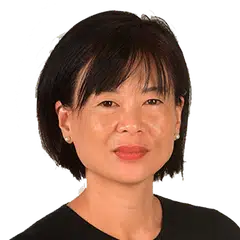More S’pore firms likely to adopt graph technology to link databases as AI use soars
Sign up now: Get ST's newsletters delivered to your inbox

Ms Deepika Giri, regional head for data, analytics and AI at research firm IDC, speaking at the GraphSummit conference on June 8.
PHOTO: NEO4J
Follow topic:
SINGAPORE – The explosion of big data and generative artificial intelligence (AI)
Graph technology, which focuses on relationships between different databases instead of data points in traditional database management systems, will rise in use among local companies as Singapore’s spending on AI and large language models such as ChatGPT increases, said speakers at the GraphSummit conference on Thursday.
Ms Deepika Giri, regional head for data, analytics and AI at research firm IDC, said Singapore is the biggest spender on AI after Japan, Australia, New Zealand and South Korea in the Asia-Pacific, excluding China.
In South-east Asia, government, banking and financial services and the manufacturing sector spend the most on AI.
Graph database is non-schematic, and can store structured, semi-structured and unstructured data, Ms Giri explained.
Structured data includes dates, numbers and product codes, while unstructured data can be photos, videos and social media posts.
Enterprises moved from “digital transformation” to the “digital-first era”, in which digital applications power business and operations, said Ms Giri.
“Looks like we will now embark on what we call the ‘AI-first’ era.”
Research firm Gartner reported that graph technology is used in 80 per cent of data and analytics innovations now, up from 10 per cent in 2021.
Search engines, hotel booking systems and social media and e-commerce algorithms are services powered by the technology, which is also gaining traction in cyber security and fraud detection for its ability to spot anomalies.
Graph technology was used during the Covid-19 pandemic to track down sources of infection clusters, said Mr Sutowo Wong, director for data analytics at the Ministry of Health. The ministry used it to map links between strangers who took the same taxi, or diners who shared meals.
Chief scientist Jim Webber from graph technology firm Neo4j, the conference organiser, explained that graph technology takes predictive analysis beyond the reading of data points such as name, age and postcode.
Drawing on a conversation he had with a medical doctor, he said: “I want to know about the people that surround you because that tells me so much more about your behaviour.
“Based on the networks that you are involved in, I know whether you are a smoker, whether you are going to be obese or tend towards obesity.
“The people who add depth to your graph will influence the way you vote, or your bad habits like drinking too much on a workday, that kind of stuff.
“Connections in data are as valuable as the data itself.”
Since setting up its Asia-Pacific regional headquarters in Singapore in 2021, the Silicon Valley-based Neo4j has offered polytechnic courses and certification courses to build up its local presence – all for free.
It also gives global access to some of its applications at no charge.
Its local customers include DBS, StarHub and the Marriott hotel group.
The 16-year-old company with over 700 employees, 15 of them in Singapore, is still hiring support engineers and for sales and marketing roles.
Mr Daniel Ng, its Asia-Pacific vice-president for marketing, said: “This technology helps you to be curious. Many people say it is really not a solution, it’s a platform that uses data to uncover questions that you may not know.”


